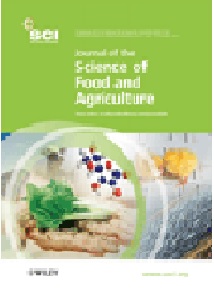View Item
- xmlui.general.dspace_homeCentros Regionales y EEAsCentro Regional Mendoza - San JuanEEA San JuanArtículos científicosxmlui.ArtifactBrowser.ItemViewer.trail
- DSpace Home
- Centros Regionales y EEAs
- Centro Regional Mendoza - San Juan
- EEA San Juan
- Artículos científicos
- View Item
Physico-chemical and toxicological assessment of liquid wastes from olive processing-related industries
Abstract
BACKGROUND: In the last few years, agricultural uses of waste waters from olive processing-related industries have been gaining interestmainly with a view to composting or bio-fertilizers. The present work examines physico-chemical, toxicological and geno-toxicological properties of three liquidwastes, namely olive mill wastewater (OMWW), olive wet husk and olive brine.
The effect of OMWWspreading on soilmicrobial activity and biomass was also
[ver mas...]
BACKGROUND: In the last few years, agricultural uses of waste waters from olive processing-related industries have been gaining interestmainly with a view to composting or bio-fertilizers. The present work examines physico-chemical, toxicological and geno-toxicological properties of three liquidwastes, namely olive mill wastewater (OMWW), olive wet husk and olive brine.
The effect of OMWWspreading on soilmicrobial activity and biomass was also evaluated.
RESULTS: Data from Artemia salina and Lactuca sativa toxicity tests indicated high levels of lethality, and inhibitory effects on
seed germination and seedling growth of all olive wastes. The genotoxicity assays using Allium cepa tests showed contrasting
results. At high concentrations, olive wastes caused inhibition or suppression of mitosis. However, they did not produce induced
anaphase aberrations.Data on reversion of Salmonella thyphimurium strains using the Ames test indicated that the olive wastes
did not present mutagenic activity. Results from the field experiment showed that OMWW at a 500m3 ha−1 had the highest
values of both soil microbial activity and biomass after 3 months of the amendment application.
CONCLUSION: This work adds new data for environmental risk assessment of olive industrial wastes. Direct use of olive wastes
for agricultural purposes should be limited owing to their possible chemotoxic, phytotoxic and antimicrobial effects.
[Cerrar]

Author
Pierantozzi, Pierluigi;
Zampini, Catiana;
Torres, Myriam Mariela;
Isla, María I.;
Verdenelli, Romina Aylén;
Meriles, José A.;
Maestri, Damian;
Fuente
Journal of the Science of Food and Agriculture 92 (2) : 216-223 (2012)
Date
2011-07-27
Editorial
Wiley
ISSN
1097-0010
Formato
pdf
Tipo de documento
artículo
Palabras Claves
Derechos de acceso
Restringido
 Excepto donde se diga explicitamente, este item se publica bajo la siguiente descripción: Creative Commons Attribution-NonCommercial-ShareAlike 2.5 Unported (CC BY-NC-SA 2.5)
Excepto donde se diga explicitamente, este item se publica bajo la siguiente descripción: Creative Commons Attribution-NonCommercial-ShareAlike 2.5 Unported (CC BY-NC-SA 2.5)

